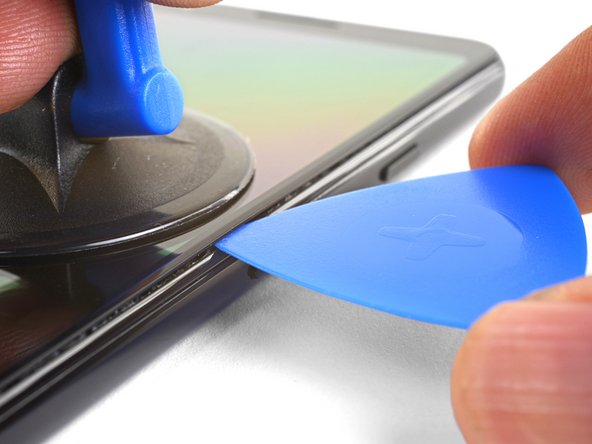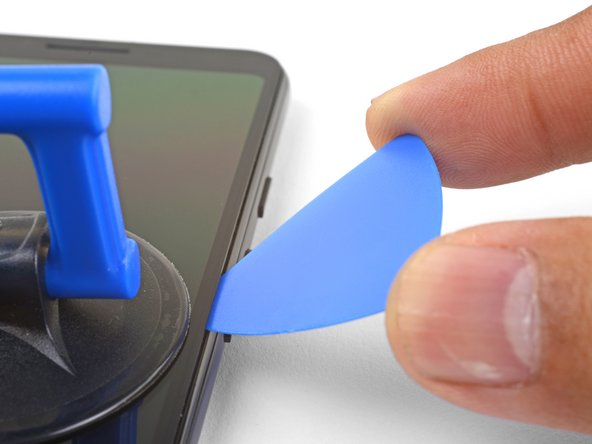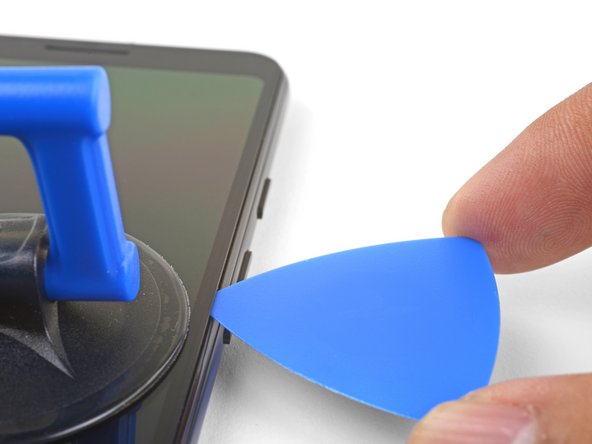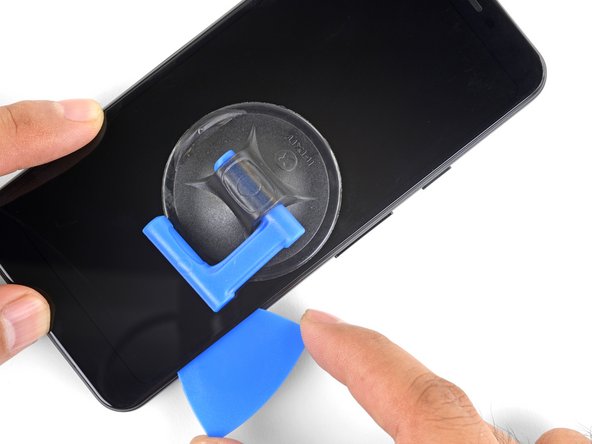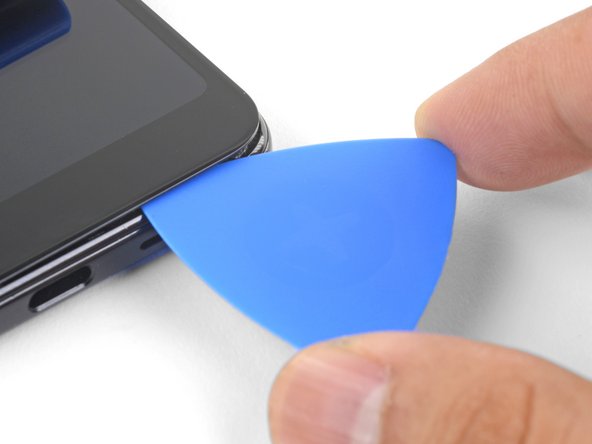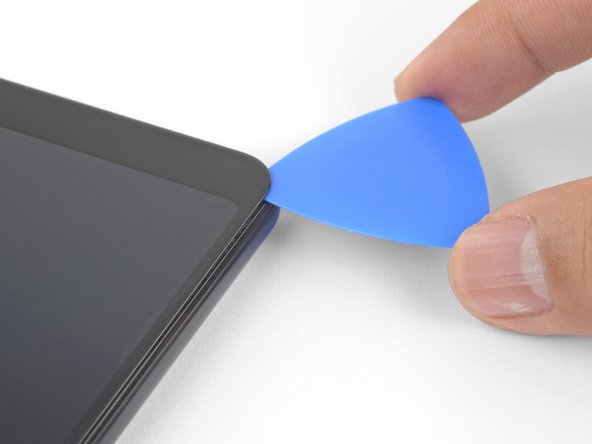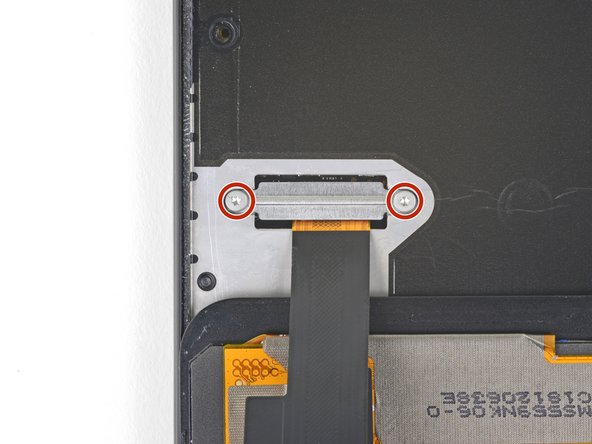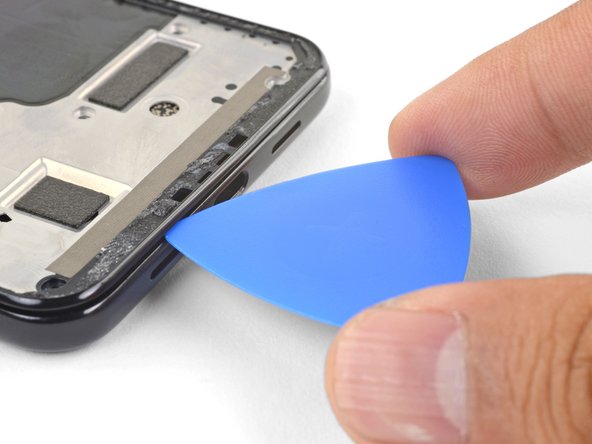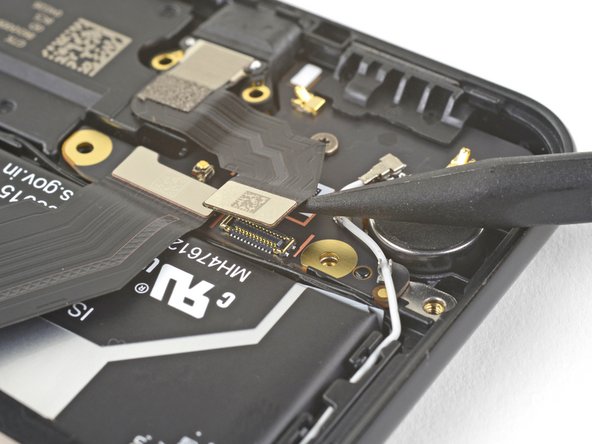Google Pixel 3a USB-C Port Replacement Guide – DIY Tutorial
Duration: 45 minutes
Steps: 21 Steps
Hey there! This repair guide is brought to you by the awesome folks at Salvation Repair, but don’t worry, Google didn’t write it. Want to know more about our repair guides? Check them out here.
The Pixel 3a’s display is a bit delicate, so be super careful. Don’t worry, we’ve got your back! If you need help, you can always schedule a repair.
Get ready to breathe new life into your Pixel 3a with this step-by-step repair guide from Salvation Repair. We’ll walk you through the process of removing and replacing a damaged USB-C port. Since the USB-C port is modular and easy to swap out, you’ll be back to charging and syncing in no time. Just remember to handle the phone’s display panel with care, as it can be fragile. If you’re planning to reuse the screen, be sure to follow the warnings in the opening procedure carefully. The trickiest part might be reattaching the proximity sensor connector, but with a little patience and finesse, you’ve got this. If you need help or want some extra guidance, you can always schedule a repair.
Step 1
– Let’s get started by checking out the two seams on your phone:
– Before you dive in, take a closer look at these key areas on the screen:
– The screen seam is where the screen meets the rest of the phone – this is where you’ll want to focus your prying efforts.
– The frame seam is where the plastic frame meets the back cover, and it’s held together with screws. Be careful not to pry here, or you might damage something.
– Keep an eye out for the screen flex cable – if you pry too deeply, you risk causing some damage. So, be gentle!
– When prying, stick to the narrow perimeter and angle your pick to avoid damaging the display panel. If you’re not feeling confident, don’t worry – you can always schedule a repair with Salvation Repair.
Step 2
Alright, so you can skip this step if you want. The Pixel 3a’s screen adhesive isn’t super strong. But, if you want to give it a little heat, you’ll be less likely to crack that screen. We’re all about keeping things smooth here, right? If you need help, you can always schedule a repair.
– Get ready to heat up your iOpener and let it have a little party on the right edge of your display. Keep it cozy for a minute and let the magic happen! If you need help, you can always schedule a repair.
Tools Used
Step 3
– That’s right! Give that suction cup a good strong pull, right near the right edge of the screen there, on your friendly repair companion.
– To get that pick in, go ahead and use that steady force, but carefully, no more than 1 mm!
– Don’t forget, if you need help at any point, you can always schedule a repair!
Step 4
If you feel the pick hitting a ridge, stop! You might be pushing on the edge of the OLED panel. Just angle the pick a bit and try again. If you need help, you can always schedule a repair.
Here’s how to carefully slide in the pick without putting a dent in that OLED panel. Make sure to do this before you tackle slicing along either of the long edges of the phone.
– Slide the 1 mm pick into the gap and give it a little upward pivot—like you’re doing a cool dance move!
– Once you’re at that angle, gently nudge the pick in about 1/4″ (6 mm). It should glide right under the OLED panel like it’s on a smooth ride.
Step 5
Hey there! Just a friendly reminder: keep that pick under 1/4″ (6 mm) to avoid any mishaps with the screen’s flex cable. You’ve got this!
– Now it’s time to get this repair started – slide the pick along the right edge and gently slice through the adhesive to loosen things up.
– Leave a pick in place to keep the adhesive from resealing, you’re making great progress so far. If you need help, you can always schedule a repair
Step 6
As you glide around the bottom edge of the phone, keep that pick no deeper than 1/4″ (6 mm).
If the corner feels like a tough nut to crack, warm it up with a heated iOpener for a minute and give it another go.
– Now it’s time to get this repair started – gently slide the pick around the bottom right corner to break through the adhesive. You got this!
– Keep going, you’re doing great! Continue slicing along the bottom edge of the phone and around the left corner. If you need help, you can always schedule a repair
Tools Used
Step 7
– Carefully glide your pick along the left side of the phone, keeping it angled just right under the OLED panel. Make sure to insert it no more than 1/4″ (6 mm) in, and you’re golden!
– To get that perfect angle under the OLED panel, push the tip of the pick in just a smidge—no more than 1 mm. Then, tilt the pick upwards and gently slide it in about 1/4″. You’re doing great!
Step 8
– Gently glide your pick along the top edge, making sure to keep it no deeper than 5/16″ (8 mm) in. You’ve got this!
Step 9
Hang tight, the screen’s still connected to the phone by a flexible cable near the left side. Don’t try to pull it off just yet – we wouldn’t want to accidentally damage anything! If you need a little help, you can always schedule a repair.
– With all edges cut, you’re ready to open that screen like a book! Gently hinge open the right edge.
– Now, use an opening pick to carefully cut through any remaining adhesive. You got this!
Step 10
– With all those adhesives cut, flip the phone over, screen side down, and let it rest on the phone. The screen flex cable will arch nicely – don’t worry, that’s normal.
Step 11
– Let’s get that screen connector bracket uncovered! Carefully peel off the black tape protecting it.
– Time to get those screws out! Remove the two 4.4 mm long T3 screws holding the screen connector bracket in place.
– Now for the bracket itself! Take it off, buddy.
– If that tape looks good, you can reuse it when you put things back together. Otherwise, grab some electrical tape and keep things secure.
Step 12
When disconnecting connectors, be gentle to avoid accidentally dislodging the tiny surface-mounted components nearby. If you need help, you can always schedule a repair
– Grab your trusty spudger and gently pry up the screen flex cable to disconnect it.
– When re-attaching press connectors like this one, align them carefully and press down on one side until you hear a satisfying click, then do the same on the other side. Avoid pressing down on the middle. Misalignment can bend the pins, leading to permanent damage. If you need help, you can always schedule a repair.
Tools Used
Step 13
– Alright, let’s get this screen out of here! Remove it with care.
– Hold on a sec, we’ve got a little comparison to do. Take a close look at your new screen and your old one. You might have to move some parts (like that speaker mesh) over to the new screen.
– Ready to put that screen back in? Let’s do this! Here’s how to reinstall:
– When you power up the phone after putting everything back together, the screen will go through a calibration thing. Don’t touch it during that part, or you might mess up the touch calibration, and then things will get a little touchy.
– If you’re using some custom-cut adhesive, we’ve got a separate guide for you. Check it out!
– And if you’re using double-sided tape, like Tesa tape, we’ve got a guide for that too! You’re a pro!
– If you need help, you can always schedule a repair
Step 14
– Time to tackle those fourteen T3 screws that are holding the plastic midframe in place! Here’s what you’ll be dealing with:
– Remember, this is a team effort; make sure to keep track of each screw and return them to their original homes once you’re done!
– Twelve silver T3 screws measuring 4.3 mm
– Two black T3 screws measuring 4.3 mm
Step 15
Those plastic clips are holding the midframe in place. Just a little bit more and you’ll be free!
– Start by inserting an opening pick into the frame seam at the bottom of your phone – that’s the gap between the plastic midframe and the back cover. Get ready to set that midframe free!
– Now, gently slide the pick along the seam to release the clips holding the plastic midframe in place. You’re making great progress! If you need help, you can always schedule a repair
Step 16
– Gently glide that opening pick along the left and right edges of your phone to pop those midframe clips loose.
– Now, lift the bottom edge of the plastic midframe up, but hang tight! You’re not ready to take it out just yet since it’s still connected by the delicate proximity sensor cable at the top.
– When you’re ready to put the plastic midframe back in, just line it up with the back cover and give the edges a little squeeze with your fingers to snap those clips back into place.
Step 17
Hey, looks like your proximity sensor connector decided to take a break when you lifted the midframe.
– Grab your trusty spudger and gently nudge the proximity sensor connector away from the motherboard. It’s like giving it a little hug to say goodbye!
– Now, let’s get that plastic midframe off. Carefully remove it and reveal the magic inside!
Tools Used
Step 18
If you’re feeling adventurous, go ahead and detach the proximity sensor from the midframe so you can pop it back onto the motherboard first!
– Let’s get that proximity sensor reconnected during re-assembly. It’s a breeze, just follow along!
– First, line up the top edge of the plastic midframe with your phone. Easy does it!
– Now, use the point of a spudger to carefully guide the proximity sensor connector onto the motherboard socket. Take your time, it’s all about finesse.
– Getting the connector in place might take a little patience, but you’ve got this! Once it’s aligned, you can use a finger to gently nudge it onto the socket.
– Time to coax the proximity sensor out of its midframe recess. Use the point of a spudger to carefully pry it loose – it’s only lightly stuck.
– Remove the sensor from the midframe, then attach the sensor connector to its motherboard socket. You’re making great progress!
– Next, thread the sensor cable through the midframe and pop the sensor back into its recess. Press down gently with your finger to secure it back onto the midframe. If you need help, you can always schedule a repair with Salvation Repair.
Tools Used
Step 19
– Now, using your trusty spudger, gently lift and disconnect the battery connector from its home on the motherboard. It’s a simple unplugging, just like taking a phone charger out of the wall!
– Give that battery flex cable a little bend so it won’t accidentally reconnect. We’re all about safety here at Salvation Repair!
Tools Used
Step 20
– It’s time to show off your super repair skills as you remove the two 3.3 mm T3 screws securing the USB-C port. Don’t worry if it’s your first time, you’ve got this! If you need help, you can always schedule a repair.
Step 21
– Grab your trusty spudger and gently pry up to disconnect the USB-C port connector from the daughterboard. You’ve got this!
– Now, go ahead and remove the USB-C port module. Easy peasy!
Tools Used







